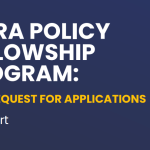Table of Contents
Johns Hopkins University – An overview
Johns Hopkins University, founded in 1876, is a private research university in Baltimore, Maryland. Named after its first benefactor, Johns Hopkins, the university’s $7 million legacy, including half of its $144.5 million donation, revolutionized higher education by integrating teaching and research. ‘
Founded by Daniel Coit Gilman, the university has led the US in annual research and development expenses, spending almost $2.50 billion in fiscal 2016. The university is divided into 10 campus divisions in Maryland and Washington, D.C., with international centers in Italy and China. Johns Hopkins is a founding member of the American Association of Universities and has welcomed 39 Nobel laureates and 1 Field medalist.
HISTORY OF Johns Hopkins UniversitY
Johns Hopkins, a Quaker businessman, and abolitionist, bequeathed $7 million to fund a hospital and university in Baltimore, Maryland, in 1873. This fortune, generated primarily by the Baltimore and Ohio Railroad, was the greatest philanthropic gift in United States history.
The university was founded by Daniel Coit Gilman, who aimed to merge teaching and research, focusing on the expansion of postgraduate education and faculty research. Gilman recruited internationally known luminaries, including mathematician James Joseph Sylvester, biologist H. Newell Martin, physicist Henry A. Rowland, classical scholars Basil Gildersleeve and Charles D. Morris, economist Richard T. Ely, and chemist Ira Remsen.
Furthermore, the university-centered mode of instruction at Johns Hopkins Hospital in 1889 and the medical school in 1893 attracted world-renowned faculty members who would become important figures in the emerging field of academic medicine. The medical school was the first graduate school of mixed medicine in the United States and became a prototype of academic medicine that emphasized bedside learning, research projects, and laboratory training.
In his will, Johns Hopkins requested that both institutions be built on his Baltimore, Clifton property. Gilman assumed the presidency, using the endowment to recruit professors and students, deciding to build men, not buildings. However, the actions in The Baltimore and Ohio Railroad became virtually useless shortly after Hopkins’ death, delaying plans to locate the university in Clifton.
Johns Hopkins University admission
The university’s undergraduate programs are the most selective: in 2019, the Admissions Office accepted 7.6% of its 30,163 applicants for Regular Decision. In 2016, 95% of admitted students graduated in the tenth upper part of their high school class and the interquartile range in the SAT composite score was 1440-1560.
In 2013, 96.8% of freshmen returned after the first year, and 88% of students graduated in 4 years. The average GPA of freshmen enrolled in the class of 2018 is 3.88. Over time, applications to Johns Hopkins University have steadily increased.
As a result, the selectivity of Johns Hopkins University has also increased. Early Decision is an option at Johns Hopkins University for students who wish to demonstrate that college is their first choice. These students, if admitted, must register. This application must be submitted on November 2. However, most students apply the Regular Decision, which is a traditional non-binding round. Therefore, these applications must be submitted on January 1 and students are notified at the end of March.
| Johns Hopkins University | |
| Class of 2023 Applicants | 32,231 |
| Class of 2023 Admitted (n, %) | 2,950 (9.2%) |
| SAT Range (1600 scale, middle 50th percentile, 2022 data) | 1480–1550 |
| ACT Range (middle 50th percentile, 2022 data) | 33–35 |
Johns Hopkins University application deadline
When applying to Johns Hopkins University, it’s important to note the application deadline is Jan. 2, and the early decision deadline is Nov. 1. The application fee at Johns Hopkins University is $70.
WATCH this Video: 25 Things You Did Not Know About Studying In the US!
How to get into Johns Hopkins University
1. Be realistic about your possibilities
When thinking about how to enter Johns Hopkins, it is very important to understand that Hopkins is an incredibly selective school. The university received more than 30,000 applications for the Class of 2023, with a general acceptance rate of approximately 9%.
Additionally, you should research the typical student profile at Hopkins and compare it to other high schools. The school considers more than just test scores. Therefore, if a student has a strong extracurricular background or history, they may be encouraged to submit their application.
If your school has access to Naviance, it can help compare GPAs and test scores with those of other applicants. At Hopkins, applications are read by academic discipline, but the school context remains important. However, this approach requires considering specific programs and ensuring enough students are accepted.
2. Be specific in your complementary essays
To enter Johns Hopkins, it’s essential to familiarize yourself with its unique characteristics, such as its research-focused approach and emphasis on collaboration. The complementary essay this year emphasizes the importance of collaboration, but some students may overlook this importance.
Therefore, to succeed, spend time thinking about your work with others and providing concrete anecdotes showcasing your skills. Additionally, connect your collaboration with your academic specialty and ensure that the application reflects your interests and cohesion. The stronger the connection, the better the chances of success.
WATCH ALSO: 10 Steps to Write a Winning Scholarship Essay!
3. Think strategically about your interests
Johns Hopkins offers over 50 specializations in various disciplines, making it an excellent choice for students. Additionally, each program offers research opportunities and internships, and each specialty can help achieve goals and results. While many students apply in the medical field, you should consider exploring non-STEM or academic disciplines that may not be as popular.
Humanities programs may not receive as many applications as STEM areas, making STEM more competitive. Therefore, to apply as a pre-Hopkins student, take challenging courses, and research opportunities, write a compelling essay, and reflect on how extracurricular activities or work experience solidified your interest in medicine.
4. Don’t make rookie mistakes
Spell the name correctly. I’m not kidding! Many times I read an essay in which a student called the school “John” Hopkins instead of Johns. You may think it is a small mistake, but it translates directly into the level of focus and commitment of the applicant. Therefore, it’s a really easy way to make your application seem completely disposable.
5. Impress in your field
Demonstrating excellence outside the classroom is crucial for admission to selective schools like Hopkins. Regardless of academic interests, making a positive impact on the school and community is essential. Therefore, in STEM fields, humanities, and social sciences you can benefit from your participation in substantial investigations.
Additionally, internships and community service can further enhance interest. Humanities research can demonstrate Hopkins’ seriousness and commitment. The school values risk-takers and applicants who don’t fear being themselves. Therefore, as you explore your college career, consider raising your interest with real experiences.
6. Meet Hopkins
Johns Hopkins University is known for its strong student ambassadorship program, allowing students to showcase their unique qualities and experiences. To stand out among applicants, it’s essential to impress the admissions office with detailed information about your interest in attending. Additionally, while visiting the school is not a requirement, utilizing numerous resources can help you understand why it’s an excellent option.
Furthermore, the school is selective, allowing applicants to choose their preferred students based on their GPA and test scores. Therefore, to succeed academically, students should demonstrate their uniqueness and create a consistent narrative within their application.
Johns Hopkins University acceptance rate
John Hopkins Acceptance Rate: How Difficult Is It to Get in? With an acceptance rate of 12.8%, admission to Hopkins is extremely competitive. Students must have strong academic profiles: 96% of admitted students were in the top 10 percent of their class.
Johns Hopkins University tuition fees
Johns Hopkins University’s tuition and undergraduate fees for 2019 were $53,740 for undergraduates and $55.816 for graduate students. 3,232 students received grants or scholarships, with an average of $38,268.
The net price after financial aid is $33,633, including tuition, fees, books, supplies, and living costs. The tuition and undergraduate fees are comparable to similar private research universities, with a cost of $53,246 for a nonprofit.
Johns Hopkins University majors
The most popular majors at Johns Hopkins University include Neuroscience; Public Health, General; Bioengineering and Biomedical Engineering; Cell/Cellular and Molecular Biology; and Computer and Information Sciences.
NOW WATCH: 25 Things You Didn’t Know About Studying Medicine
Here are the majors and programs offered by Johns Hopkins University and the types of degrees awarded.
- Africana Studies
- Anthropology
- Applied Mathematics & Statistics
- Archaeology
- Behavioral Biology
- Biology
- Biomedical Engineering
- Biophysics
- Chemical & Biomolecular Engineering
- Chemistry
- Civil Engineering
- Classics
- Cognitive Science
- Computer Engineering
- Computer Science
- Earth & Planetary Sciences
- East Asian Studies
- Economics
- Electrical Engineering
- Engineering Mechanics
- English
- Environmental Engineering
- Environmental Science
- Environmental Studies
- Film & Media Studies
- French
- General Engineering
- German
- History
- History of Art
- History of Science, Medicine & Technology
- Interdisciplinary Studies
- International Studies
- Italian
- Materials Science & Engineering
- Mathematics
- Mechanical Engineering
- Medicine, Science & the Humanities
- Molecular & Cellular Biology
- Natural Sciences
- Near Eastern Studies
- Neuroscience
- Philosophy
- Physics
- Political Science
- Psychology
- Public Health Studies
- Romance Languages
- Sociology
- Spanish
- Writing Seminars
Johns Hopkins University scholarship
Hopkins provides needs-based scholarships for international undergraduate students, with an average scholarship of $25,000. International students, who are not US citizens or permanent residents, are eligible for funding but may apply for Hopkins funding. Students with F1, F2, J1, J2, or G series visas may also apply.
Furthermore, Hopkins considers the financial circumstances of international students and meets 100% of their calculated needs. Therefore, to apply, international students must indicate their family’s financial needs on their application, send a CSS Profile, and provide signed income statements to the IDOC Service of the College Board. Hopkins ensures attention for international students, covering 100% of their calculated needs.
WATCH: 25 Best Full Scholarships You Should Know – If you want to Study Abroad!
NOTE: International students requesting financial assistance must also submit the International Student Finance Certification Form, including bank verification with their application. Additionally, international students should print, complete and send this form by email to intlhelp@jhu.edu or by mail to the following address:
Application Coordinator
Office of Undergraduate Admissions
Johns Hopkins University
3400 N. Charles St. / Mason Hall
Baltimore, MD 21218
International students without financial aid do not need to submit a COF and bank statement unless admitted to the university. Therefore, if admitted, they must submit the Financial Certification Form and Bank Account Statement. However, scholarship assistance is not available for international students transferring from another university.
Furthermore, financial aid documents must be submitted before November 15 for Freshman Early Decision applicants and January 15 for regular Decision applicants. Private loans are available for international undergraduate students, with most lenders requiring a US citizen co-debtor.
Conclusion
Johns Hopkins, a founding member of the American Association of Universities, has welcomed 39 Nobel laureates and 1 Fields medalist as of October 2019. Los Azulejos’ men’s lacrosse team, founded in 1883, has won 44 national titles and plays in the Big Ten Conference. Additionally, the university offers an academic environment for both domestic and international students.
Official Johns Hopkins University Website
Read Also: Best International Student Loans for African Students 2023 (Ultimate Guide)









